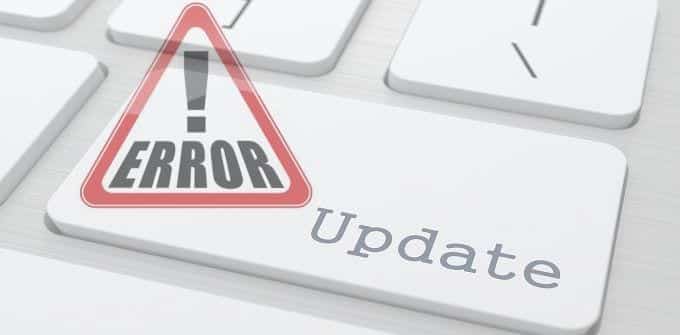PCs running Avast anti-virus left bricked after new Windows update
Hordes of users using Avast Anti Virus software have found that their PCs, especially those running Windows 8 and 8.1, grind to a halt after they applied both Microsoft’s recent KB3000850 update and Avast’s latest automatic updates. Avast has been hard at work trying to figure out why the combinations of a recent update of Windows & Avast’s own update was causing machines running their software to break down completely.
Also Read- How To Fix Avast UI Failed To Load Error
Avast and Microsoft under fire
The users though didn’t differentiate between Avast and Microsoft while venting their fury on the forums and social media networks. Some users have claimed that their machines will not boot up while others claimed that their machines were taking a long time to apply the patch. Microsoft’s not immune either: a Redmond thread titled Major issues with KB3000850 includes plenty of people wondering why the company issued an update incompatible with third-party software.
That criticism may not be entirely fair, as an Avast staffer has posted the following explanation for the mess: “We have been able to simulate the problem in our lab and I think we fixed this issue. This Windows updates calls new memory related functions which are not fully compatible with Avast.”
Update issued
The poster – “pk” – said that a patch for the issue will be released to rectify the situation and later said it had been released by Avast. A few forum members seem, however, to be having trouble even with the automated patch, reporting a variety of glitches including very slow downloads of the KB3000850 update on machines running Avast. Whatever the cause, a fair few people are rather upset with both Avast and Microsoft, with the latter company most often felt to be in the wrong.
Microsoft forum moderator Rohit Siddegowda offers suggestions for overcoming the issues created by KB3000850 as below :
Hi,
As you are facing issues with Windows Update, you may follow these methods to troubleshoot and let us know the results for each step taken.
Method 1:
I would suggest you to run the Windows update troubleshooter to troubleshoot the issue. You may refer to the article to troubleshoot problems with updates:
https://windows.microsoft.com/en-in/windows/troubleshoot-problems-installing-updates#1TC=windows-8
Method 2:
I would suggest you to rename the Windows Update temporary download folder and check if you are still facing the issue with updates:
a. Copy and then paste the following commands in a new Notepad document:
net stop wuauserv
cd %systemroot%\SoftwareDistribution
ren Download Download.old
net start wuauserv
b. On the File menu, click Save As.
c. Choose the location as Desktop.
d. In the Save as type box, click All Files.
e. In the File name box, type “Rename.bat” without quotes.
f. Click Save.
g. On the File menu, click Exit to exit Notepad.
h. On your desktop, right-click Rename.bat, and then click Run as Administrator.
If you are prompted for an administrator password or for confirmation, type the password, or click Continue.
i. Try to install the update and apps.
j. If the update is installed successfully, delete the Rename.bat file that you saved on the desktop.
Method 3:
I would also suggest you rename the Catroot2 folder and check if it helps. Follow these methods to do the same:
Swipe in from the right edge of the screen, and then tap Search.
(If you’re using a mouse, point to the upper-right corner of the screen, move the mouse pointer down, and then click Search.)
Enter “CMD” without quotes in the search box, tap or click Apps
Touch and hold the Command prompt tile in the search results. Then drag your finger down until the tile is outlined by a solid line. Once it happens release your finger from the screen.
Tap or Click Run as administrator.
At the command prompt, type the following commands, and then press Enter after each line:
net stop cryptsvc
ren %systemroot%\System32\Catroot2 oldcatroot2
net start cryptsvc
exit
6. The above command will stop the Cryptographic service, rename the Catroot2 folder and then start it again. Catroot2 folder will be recreated by Windows.
Method 4:
Refer to the article to fix Windows corruption errors by using the DISM or System Update Readiness tool:
https://support.microsoft.com/kb/947821
Note: When you run this command, DISM uses Windows Update to provide the files that are required to fix corruption. However, if your Windows Update client is already broken, use a running Windows installation as the repair source, or use a Windows side-by-side folder from a network share or from a removable media, such as the Windows DVD, as the source of the files. To do this, run the following command instead:
DISM.exe /Online /Cleanup-Image /RestoreHealth /Source:C:\RepairSource\Windows /LimitAccess

